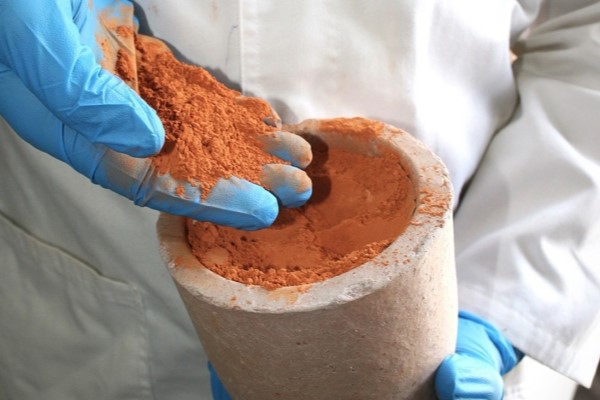Low-grade clay could transform the future of low-carbon concrete

Engineers at RMIT University have converted low-grade clay into a high-performance cement supplement. This has the potential to open a new market in sustainable construction materials.
Cement production currently accounts for about 8% of global CO2 emissions. While replacing some of it with clay can reduce environmental impact, high-grade kaolin clay is in high demand across industries such as ceramics, cosmetics and paper.
The team at RMIT has demonstrated that cheaper and more abundant illite clay can be mixed with low-grade kaolinite clay to make stronger concrete.
Published in Construction and Building Materials, the study introduces a new process where low-grade illite and kaolin clays are mixed at an equal ratio, then heated at 600°. This co-calcination process significantly boosts the pozzolanic reactivity of illite clay, which normally performs poorly on its own. The result is concrete that’s 15% stronger with 41% lower porosity, and a more compact internal structure.
“Based on this approach, we can replace 20% of cement usage, using low-grade illite and kaolin combinations while achieving even better performance of the yield product,” RMIT’s School of Engineering project lead, Dr Chamila Gunasekara, says.
As demand for kaolin grows, with its market projected to reach US$6 billion by 2032, illite clay could offer a cost-effective and scalable alternative.
Study lead author Dr Roshan Jayathilakage says the technique was more energy efficient.
“Since raw materials are processed together, it streamlines industrial operations and lowers fuel use compared to multiple calcination steps,” Jayathilakage says.
Supporting the research is a computational tool developed with Hokkaido University, which predicts how various clay compositions perform in concrete.
The tool allows the team to evaluate performance in various activated clays in concrete mixtures, providing detailed insights into their mechanical properties, durability and energy-efficiency, where currently available approaches have struggled.
RMIT’s School of Engineering’s Dr Yuguo Yu says their computational tool enabled a more efficient assessment of material performance, reducing the reliance on extensive laboratory tests.
“By predicting how different clay compositions affect concrete behaviour, engineers can better design energy-efficient mixtures tailored for local clay types and specific environmental conditions,” he says.
